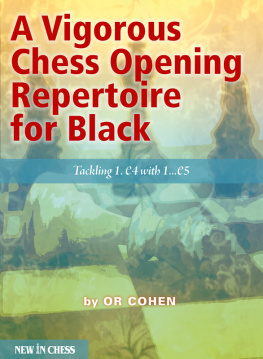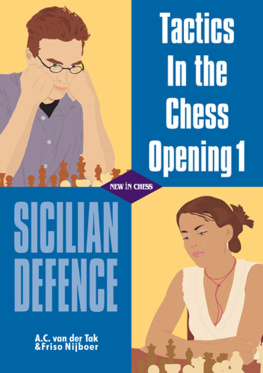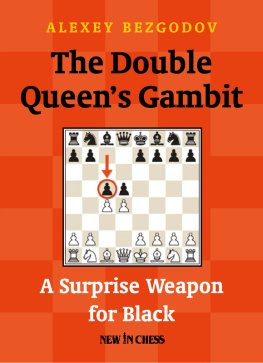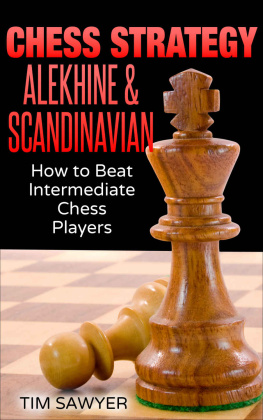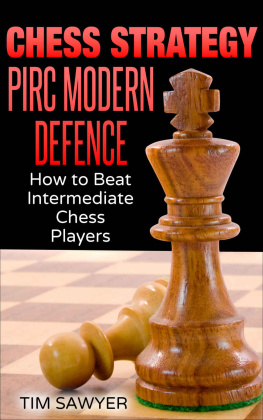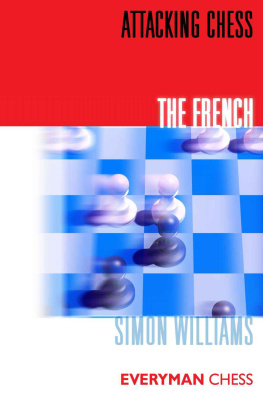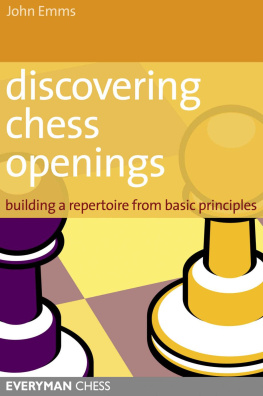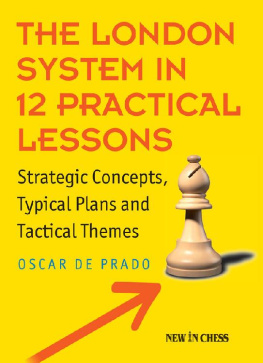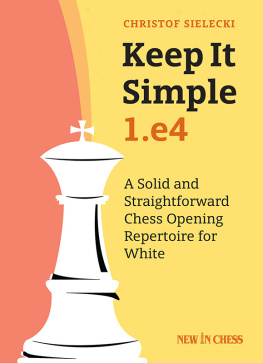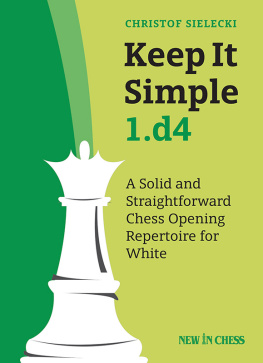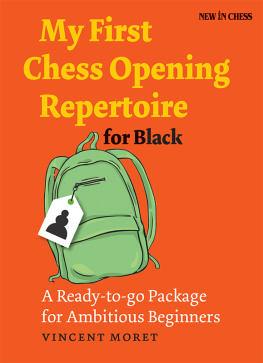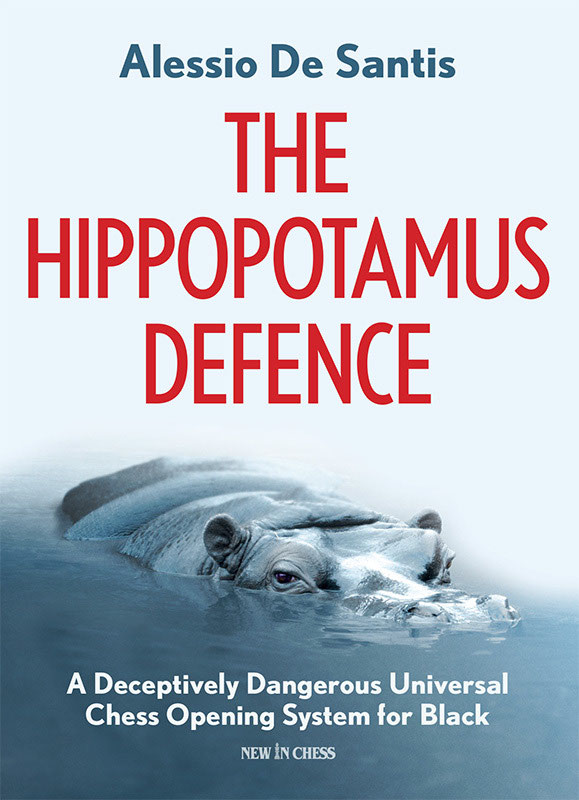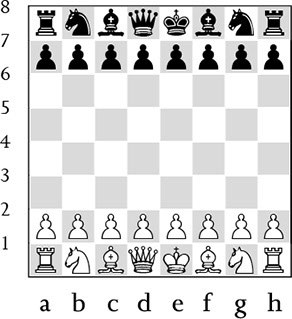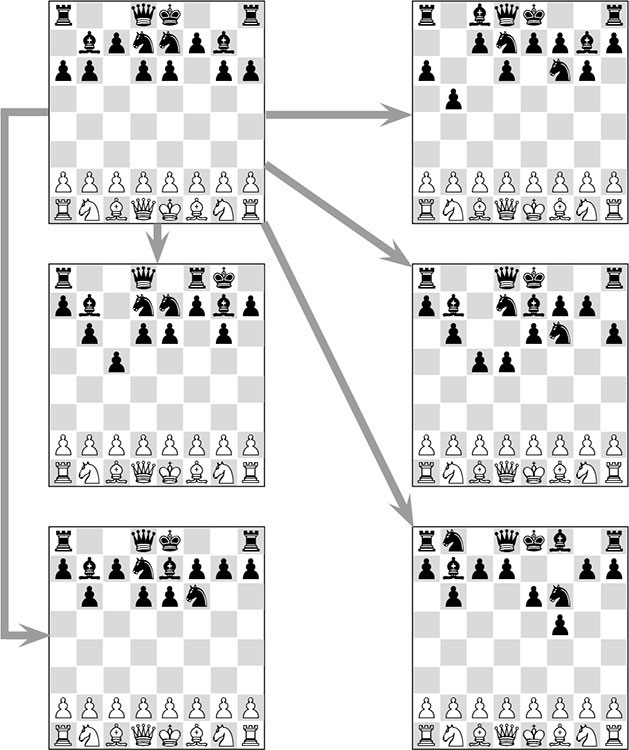The Hippopotamus Defence
Alessio De Santis
The Hippopotamus Defence
A Deceptively Dangerous Universal Chess Opening System for Black
New In Chess 2018 2019 New In Chess Translated from Difesa Ippopotamo 2.0 e Semi-Ippopotamo (Le Due Torri, 2018) by Andrew Gilmour Published by New In Chess, Alkmaar, The Netherlands www.newinchess.com
All rights reserved. No part of this book may be reproduced, stored in a retrieval system or transmitted in any form or by any means, electronic, mechanical, photocopying, recording or otherwise, without the prior written permission from the publisher.
Cover design: Ron van Roon Supervision: Peter Boel Editing and typesetting: Ren Olthof Proofreading: Sandra Keetman Production: Anton Schermer
Have you found any errors in this book? Please send your remarks to editors@newinchess.com. We will collect all relevant corrections on the Errata page of our website www.newinchess.com and implement them in a possible next edition.
ISBN: 978-90-5691-831-6
Contents
Explanation of symbols
The chessboard with its coordinates:
| White to move |
| Black to move |
| King |
| Queen |
| Rook |
| Bishop |
| Knight |
| White stands slightly better |
| Black stands slightly better |
| White stands better |
| Black stands better |
| + | White has a decisive advantage |
| + | Black has a decisive advantage |
| = | balanced position |
| unclear |
| with counterplay |
| ! | good move |
| !! | excellent move |
| ? | bad move |
| ?? | blunder |
| !? | interesting move |
| ?! | dubious move |
| N | novelty |
Preface
Hello to all my old and new readers.
For me this system has a great sentimental and practical value as it was my main defence in the period when I achieved three IM norms.
For me this system has a great sentimental and practical value as it was my main defence in the period when I achieved three IM norms.
Back in 2006, I wrote a book on this set-up which sold out quickly and is now unavailable. In the meantime the system has grown and has been noticed by many players, both at normal Open level and by top GMs. I myself gained a fourth IM norm thanks to the semi-Hippopotamus, in a key game against the living legend Romanishin, and several students of mine have had success with this system. In short, now is the right time for a completely new work on the Hippopotamus system, supplemented by a full discussion of the semi-Hippopotamus, which was left unexplored in the earlier book.
An ever wider public is looking for clear and simple systems of play, to avoid getting lost in the endless maze of opening theory, and the Hippopotamus really fits the bill here. The book is aimed at everyone, in that the explanations are as detailed as possible.
Conversely, using the opening itself will be more suitable for some than others. In the band from beginners up to Elo 1800 it can be used with light preparation, as games are decided by factors that lie outside the opening; in the 1800-2100 range, a good knowledge of the strategy and a careful study of move orders will be needed. Above the 2100 threshold, the defence is still perfectly sound but, for competitive reasons, it is kept back as a surprise weapon because it requires accurate preparation as well as deeper study by yourself with a computer.
Its time to get down to work. Enjoy your Hippopotamus games! Alessio De Santis Piacenza 2018
The Hippopotamus in 60 seconds
The Hippopotamus is a universal set-up for Black, against all White openings.
There is only one Hippopotamus, there are many semi-Hippos.
Layout of the book and study method
This book is designed to be studied in three parts, corresponding to three different levels of detail.
Layout of the book and study method
This book is designed to be studied in three parts, corresponding to three different levels of detail.
You can study one, two or three of the sections according to how much preparation you need. The many diagrams given allow you to study large parts of the book by following the moves without a board from one diagram to the next.
Stage 1: Flash The first stage makes much use of visualization of positions, rather than memorizing moves. Here youll find the basics for playing the Hippopotamus straight away, advantages, disadvantages and a quick outline of strategic themes and recurring motifs. This section might take you no more than 3-4 hours of work, depending on your playing strength and how quickly you learn.
Stage 2: Reflection The second stage introduces you to the study of complete strategies and the problems posed by your opponent.
It is the longest section, full of instructive annotated games without the burden of theory. The knowledge contained in the first two levels is often adequate for me to compete up to international level, given that many opponents are not as well prepared for the Hippopotamus as they are for other openings.
Stage 3: In depth In the third stage well do a detailed study of the theoretical problems (often not known by White either), but still in a form thats manageable for the club player. This is the part where semi-Hippopotamuses predominate, because these come about to counter specific ideas by White.
Stage 1: Flash
TOPICS CHAPTER 1
Introduction to the Hippopotamus system
The Hippopotamus defence is a universal system of play in chess, which Black can use against almost all White openings. It is based on a set of 10 standard moves which, in theory, can be played almost without paying any attention to what White does.
These are, in various orders, the moves: 1...g6, 2...g7, 3...d6, 4...d7, 5...e6, 6...e7, 7...b6, 8...b7, 9...h6, 10...a6. Or equally: 1...b6, 2...b7, 3...e6, 4...e7, 5...d6, 6...d7, 7...g6, 8...g7, 9...a6, 10...h6. You can of course start off with 1...d6 (suggesting a Pirc) or 1...e6 (like a French). This auto-pilot is possible because Blacks set-up is backward and makes no contact with the white formation.
The Hippopotamus is a universal Black defence.
For the moment lets leave aside Whites set-up; Blacks defence is intrinsically sound.
For the moment lets leave aside Whites set-up; Blacks defence is intrinsically sound.
When Black reaches the full set-up (2500 games), White has shown no real advantage, a theoretical 52%, leaving Black with a respectable 48% score, second only to the Sicilian Defence. Whats more, when White plays the kingside opening 1.e4, which is wrongly considered the most dangerous, his overall score goes down to 49%, giving Black 51%! If White tries an early attack, or opts for a particular set-up, Black will need to take adequate measures and not blindly follow predetermined moves. And so the semi-Hippopotamus comes into being, when the original idea is put on hold or completely replaced by others. This doesnt mean that the new positions are worse, sometimes they are actually even better for Black.


